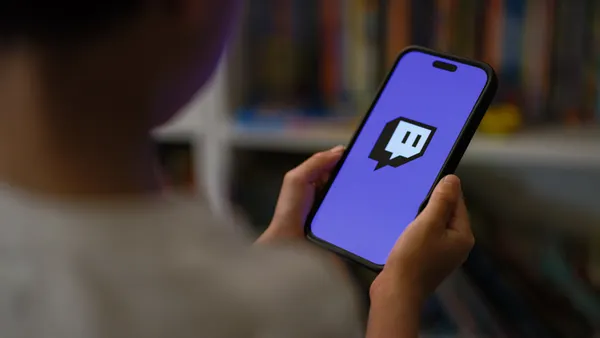The sky's the limit when it comes to how many people can attend a virtual event. Marketers no longer have to worry about running out of space in event halls or not ordering enough food to keep all of their attendees happy. Today, you can host a virtual event and invite as many participants as you’d like.
That said, you don’t often stand to gain much by filling a virtual event with just anyone willing to attend. Like most areas of life, quality over quantity remains the key to success. Why? Virtual events make for a strong lead generation tactic, but if you invite the wrong guests, your post-event follow-up efforts can drag when following up on ineffectual leads.
A key component of the pre-event planning stage of the lifecycle of a successful event involves attracting the right kind of leads. Keep reading for insight on how to improve your lead generation efforts for virtual events.
Choose the Right Time and Length
To begin planning a virtual event, you must first choose when you plan to host it. It’s imperative to come up with a time that suits the scheduling needs of your audience. You may find that if your audience spans different time zones, it can help to plan a few different event sessions at varying times. IDG surveyed 200 respondents about their attendance at virtual events and found that people in Europe, the Middle East, and Asia (EMEA) prefer midmorning for attending work events, while respondents in the U.S. desire a later start time after 5 p.m.
The length of the event also offers an important consideration. When hosting a B2B event, for example, you need to plan an event that can fit into the schedule of a busy professional. Almost half (41%) of survey respondents feel virtual events should only last 45 to 60 minutes.
Think carefully about how you’ll use the time available during a virtual event so you can really foster engagement with your audience. Zachary Bosin, Vice President of Product & Growth Marketing at BlueJeans by Verizon, recommends thinking of planning your event content like hosting a television show with different scenes, each offering a new experience or perspective for your audience to enjoy.
“All of that thought process is going to show up on the day of the event, and it's going to be appreciated by the audience,” Bosin explained, “So a lot of this revolves around the content and messaging that you're looking to really come across.”
Expand Event Reach
Only you can decide what quality leads look like to you, and you can then choose to expand your event reach accordingly. For example, with BlueJeans Events, you can make your event public or private by using the registration features. That way, you can limit or open up your invite list as much as desired. Consider the following options for managing how people access your event:
- Public. Make your event accessible to anyone with a link.
- Invite only. Require registration and gather attendee info/data.
- Restricted. Only allow specific domains to attend.
Plan an Event that Isn’t a Replacement for In-Person Events
During the early days of the pandemic, some marketers felt a push to try to replace in-person events with virtual ones. This dangerous mindset lacks the consideration that virtual events offer a very different experience to in-person events — and that’s something to embrace.
The key to planning a virtual event that outshines in-person events? “Any time we're talking about media and people's consumption habits, you have to remember that content is king,” Bosin advised, “One of the best ways to recruit attendees to your virtual event is to have incredible content.”
Alongside planning a valuable line-up of content and bringing in subject matter experts to host, moderate or participate in your virtual events, Bosin suggests thinking about your desired outcomes first, “What are we trying to do here? Are we trying to launch a new product? Are we trying to drive thought leadership?” Working your way backward during the planning process can help you think more critically about what your event can offer and what kind of leads you need to attract to meet your end goals. “You have to have a roadmap to plan any successful event,” Bosin stated.
Once you know more about your event agenda, you can advertise what your virtual event can offer that an in-person event can’t. For example, you can often gain better access to industry stakeholders when you attend a virtual event. With BlueJeans, your on-camera panel members can engage attendees by promoting those raising their hand to speak onto the event broadcast screen, thus creating real-time interaction during the event. This also allows you to advertise what kind of access your event attendees can gain to subject matter experts and industry stakeholders.
Key Takeaways
Let’s look at some real-life examples of how businesses improved their lead generation efforts for virtual events.
The German Football Association (DFB) wanted to find a way to host a planned hackathon that could no longer occur in person after Germany went into lockdown at the beginning of the pandemic. The solution? The DFB relied on BlueJeans Events to host their hackathon virtually. The security tools that come with BlueJeans Events enabled the DFB to filter out about 100 uninvited people from the event. By doing this, they could focus more attention on the leads that mattered to them.
Adobe also turned to BlueJeans Events to host virtual events and embedded the stream into their website to provide easy access to their events. In 2020, Adobe had no choice but to cancel their in-person Adobe MAX Creativity Conference. They still wanted to deliver interactive experiences to attendees all over the world. Enter BlueJeans Events.
Adobe required a virtual event platform with the ability to give attendees an engaging, immersive, and unified experience. The company used BlueJeans Events to host parts of the MAX experience, delivering interactive digital activities to ensure a seamless and engaging virtual event. Their efforts paid off, and 30,000 participants attended their “Meet the Team” sessions, while 4,000 attended their “Birds of a Feather” chatroom sessions. In total, Adobe attracted 21 million views globally. Because Adobe offers a business and consumer product that doesn’t always require a hands-on sales experience, the ability to expand their reach massively with a virtual event worked in their favor.
Remember — what works for one brand may look different than another when it comes to attracting the right leads through a virtual event.










